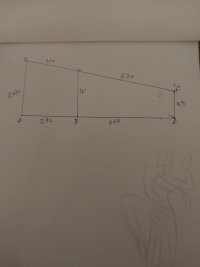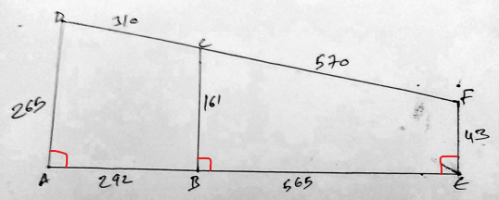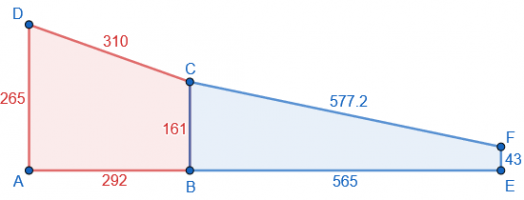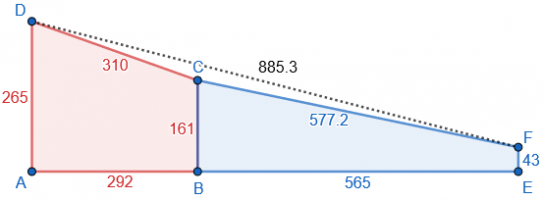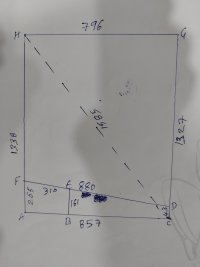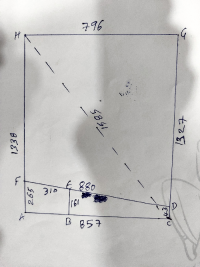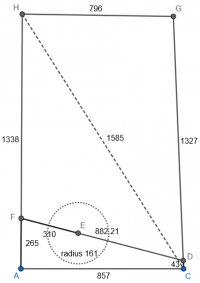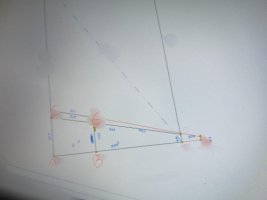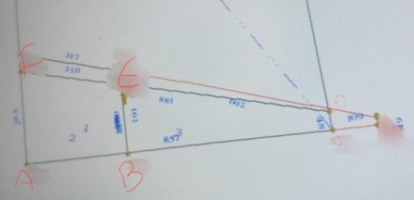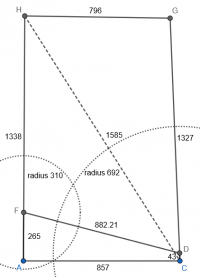Thanks Dr. Peterson. I have tried GeoGebra and totalled the interior angles but they are not even 360°. I assumed it as a quadrilateral because angles have not been given in the document. Could you explain me how to calculate the area of this one.
The sum of the interior angles of
any quadrilateral is 360°. And
any figure with four straight sides is by definition a quadrilateral. (But ABEFCD is a hexagon.) So, what is it that you added up? Please at least show us your figure, so we can tell what you are talking about!
With a little change in the measurements the angles are coming to 360°. If they are not quadrilaterals how to measure the area of this.
As I said, to calculate the area, you need more information than you provided. Please either
show the entire description of the property, or at least tell us one additional fact other than the sides.
As I said, a land document is required to give more information than just side lengths. Typically it will show the
directions of the sides; if it didn't do that, it might possibly show the lengths of diagonals, which can be sufficient. But we can't help without seeing the details you are omitting.
But if you can draw it accurately, without guessing angles, then GeoGebra will calculate the area for you. So the hard part is not how to calculate the area, but how to specify the figure.

